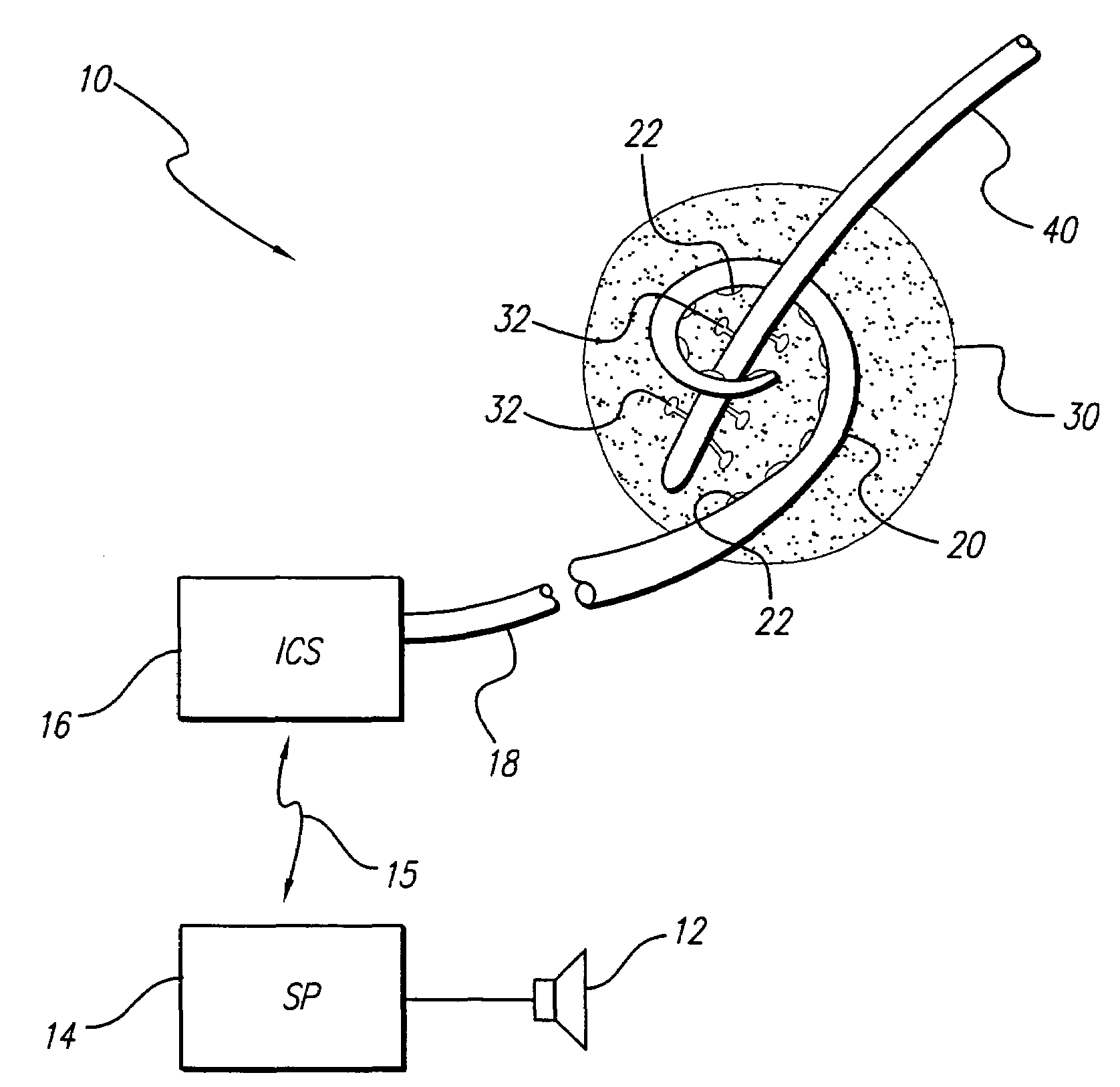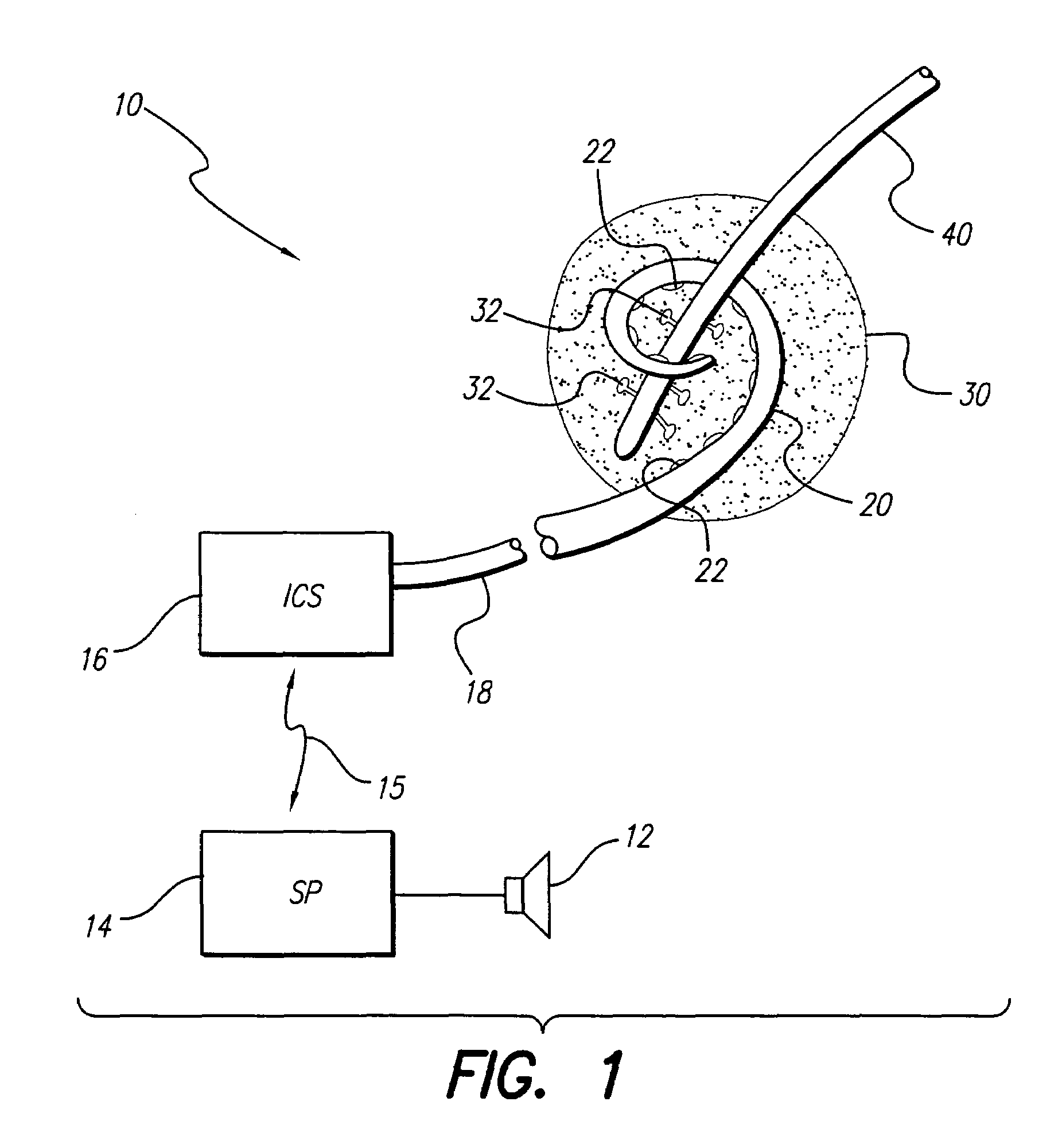System and method for using a multi-contact electrode to stimulate the cochlear nerve or other body tissue
a multi-contact electrode and cochlear nerve technology, applied in the field of multi-contact electrode to stimulate cochlear nerves or other body tissues, can solve the problems of patient encountering the stimulation output limit of the device, poor performance of partial patients, and difficulty in isolation and stimulation, etc., to achieve high stimulation threshold, high stimulation threshold, and preservation of temporal and spatial resolution
- Summary
- Abstract
- Description
- Claims
- Application Information
AI Technical Summary
Benefits of technology
Problems solved by technology
Method used
Image
Examples
Embodiment Construction
[0037]The following description is of the best mode presently contemplated for carrying out the invention. This description is not to be taken in a limiting sense, but is made merely for the purpose of describing the general principles of the invention. The scope of the invention should be determined with reference to the claims.
[0038]Before describing the present invention, it will be helpful to review the operation of a typical cochlear stimulation system.
[0039]Multi-channel stimulators are used in various implantable medical devices. For example, such multi-channel stimulators can be found in spinal cord stimulation devices for treating intractable pain and cochlear devices for restoration of hearing in the profoundly deaf. As an exemplary application of the present invention, the invention will be discussed in the context of use in a cochlear implant device. Details associated with the operation of a typical cochlear implant system may be found in one or more of the following U....
PUM
 Login to View More
Login to View More Abstract
Description
Claims
Application Information
 Login to View More
Login to View More - R&D
- Intellectual Property
- Life Sciences
- Materials
- Tech Scout
- Unparalleled Data Quality
- Higher Quality Content
- 60% Fewer Hallucinations
Browse by: Latest US Patents, China's latest patents, Technical Efficacy Thesaurus, Application Domain, Technology Topic, Popular Technical Reports.
© 2025 PatSnap. All rights reserved.Legal|Privacy policy|Modern Slavery Act Transparency Statement|Sitemap|About US| Contact US: help@patsnap.com



